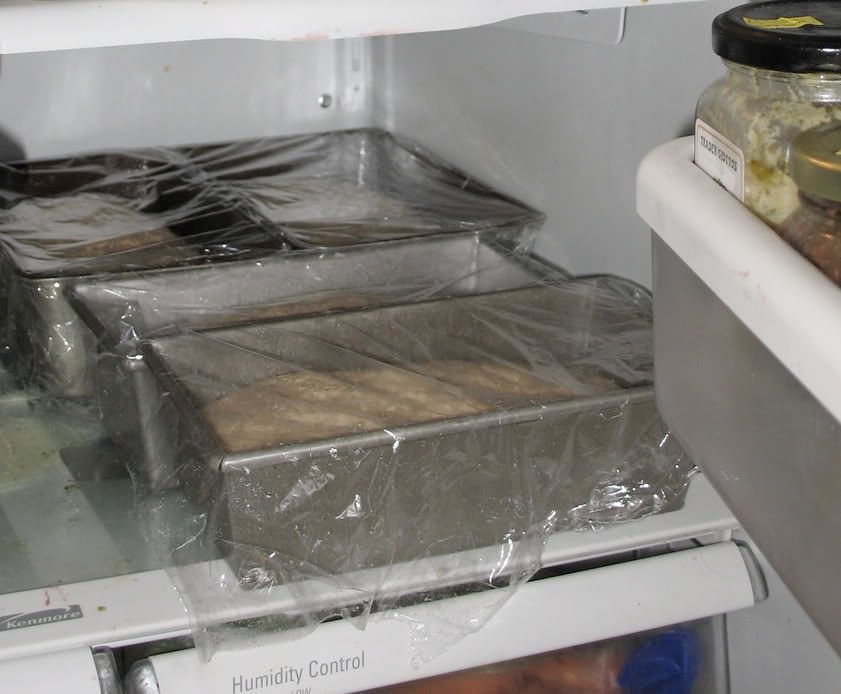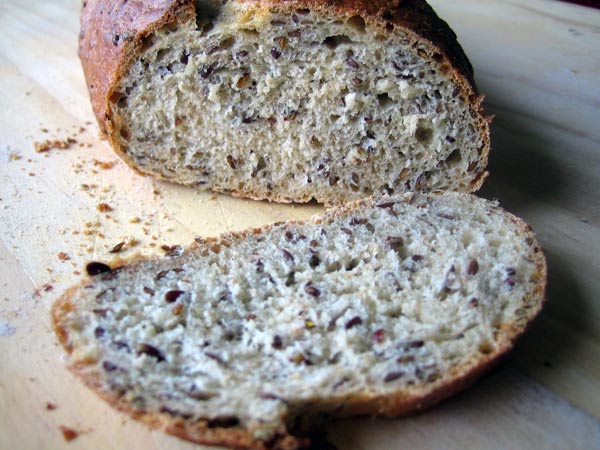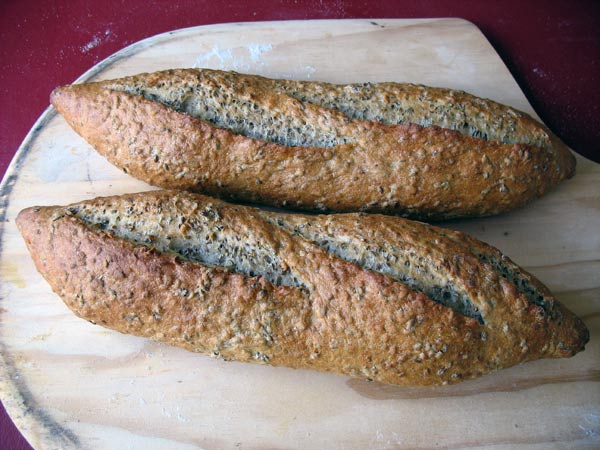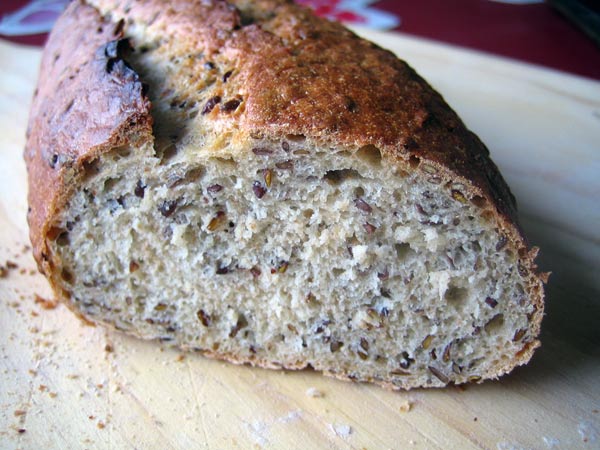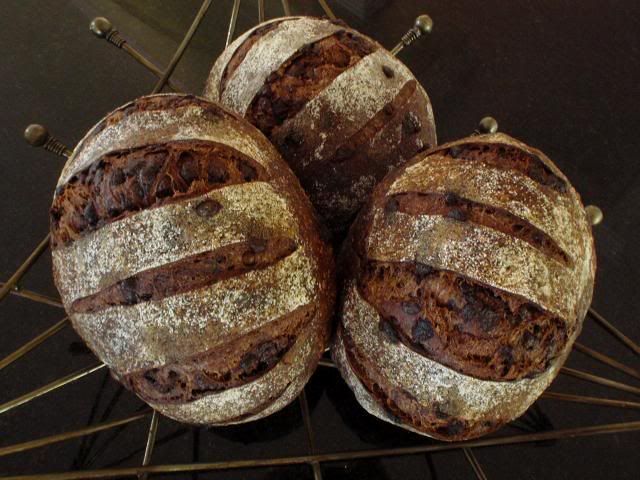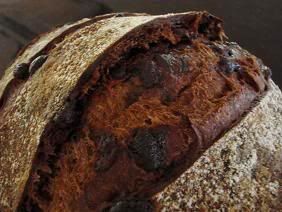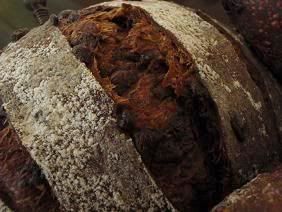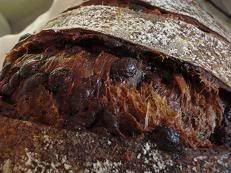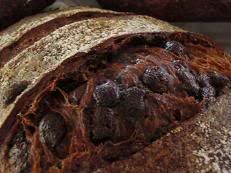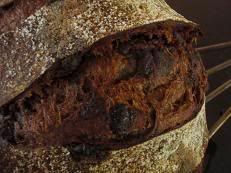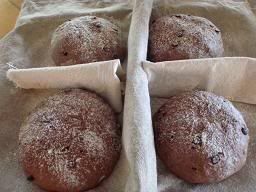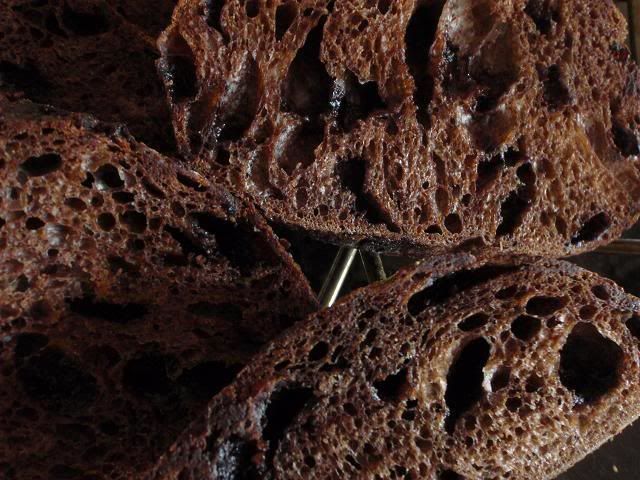
Bread in the spirit of FWSY

12 September, 2014
One of the attractions of Ken Forkish's Flour Water Salt Yeast bread baking book is that a concerted study of it will teach you how the important variables of ingredients, time and temperature can be manipulated to produce different flavor profiles and how, keeping most methods constant, you can develop procedures that accommodate to your own schedule and still produce a variety of outstanding breads.
Well, that's the theory. In fact, most of us don't have complete control of ambient temperature, one of the most important variables controlling fermentation. That means results can be very different from those Forkish describes. Nonetheless, if you do understand the basic principles, you can juggle the variables you can control to obtain really outstanding breads using Forkish's formulas and methods.
In my Central California kitchen, about 9 months of the year, the temperature is significantly higher than it was in Forkish's Portland, Oregon kitchen when he developed his formulas. As a result, fermentation proceeds very much faster than described in the book. An “overnight” bread from FWYS will get way over-fermented if left overnight at room temperature. I have successfully followed Forkish's times only in Winter, when my kitchen temperature runs 65-68ºF.
On top of that, my personal time demands do not always fit with the schedules Forkish describes in any of his recipes. So, sometimes … well, almost always … , I end up using Forkish's basic approach, but use my ability to control time and temperature to make it work for me. For example …
Today, I baked a couple loaves based on Forkish's “Overnight Country Blonde” formula. It calls for a final levain feeding at 9 am, mixing the final dough at 5 pm, letting it ferment at room temperature overnight, shaping the loaves at 8 am the next morning and baking at noon. I kept the formula (ratio of ingredients) and most procedures the same but altered the time and temperature a lot. Here's what I actually did:
Three days before baking, at 10 pm, I activated my refrigerated stock starter by mixing 30 g of starter (50% hydration) with 75 g water and 75 g flour (a mix of 70% AP, 20% WW and 10% medium rye).
Twelve hours later, I fed the levain as follows:
Levain ingredients | Wt (g) | Baker's % |
Mature liquid levain | 50 | 50 |
AP flour | 200 | 80 |
WW flour | 50 | 20 |
Water | 200 | 80 |
Total | 500 | 230 |
In a medium-size bowl, dissolve the levain the the water. Add the flours, and mix thoroughly.
Transfer to a clean bowl. Cover tightly.
Ferment until moderately ripe. (In my 78ºF kitchen, this took about 6 hours. The levain was tripled in volume. It had a domed surface. In the transparent, plastic container, bubbles could be seen throughout the levain.
Cold retard at 40ºF until the next morning.
At about 8 am the next morning, I took the levain out of the refrigerator and let it warm up on the counter. At about 10 am, I proceeded to mix the final dough as follows:
Final Dough ingredients | Wt (g) |
Levain | 216 |
AP flour | 804 |
WW flour | 26 |
Medium Rye flour | 50 |
Water (90ºF) | 684 |
Salt | 22 |
Total | 1802 |
In a 6 L Cambro(R) container, mix the water and flours to a shaggy mass. Cover and let stand for 20-60 minutes. (Autolyse).
Sprinkle the surface of the dough with the salt and add the levain in chunks.
Mix by folding the dough over itself while rotating the container, then complete the mixing by the “pinch and fold” method described by Forkish. Wet hands in water as necessary to reduce dough sticking to hands. (I wet my hands very liberally and frequently. My dough weighed 1820g at the time I divided it, implying that using wet hands added 18g of water to the dough. This increased the final dough hydration from 78% to 79.8%.)
Bulk ferment until the dough has increased in volume to 2.5 times with stretch and folds 4 times at 30 minute intervals at the beginning of fermentation. (This took 2 1/2 to 3 hours, in my kitchen.)
Divide the dough into two equal parts. Pre-shape as rounds. Cover with a damp towel and let rest 15-20 minutes.
Shape as boules and place in linen-lined bannetons that have been well dusted with a mix of AP and Rice flours.
Place bannetons in plastic bags and refrigerate overnight. (This was actually from about 4 pm to about 2:30 pm the next day.)
Bake at 475ºF in Dutch ovens, as Forkish describes.
Transfer to a cooling rack and let cool before slicing.


In summary, I altered Forkish's procedures by drastically shortening the very long, room temperature bulk fermentation and adding a long, cold retardation of the formed loaves. And the levain was also cold retarded overnight.
Forkish describes the flavor of this bread as having a mild tang that mellows over the first couple days after baking. My bread had a sweet, wheaty flavor and a moderate tang, tasted when just cooled to room temperature. The crust was crunchy, and the crumb was quite chewy. Pretty good stuff.

Happy baking!
David


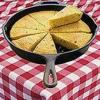




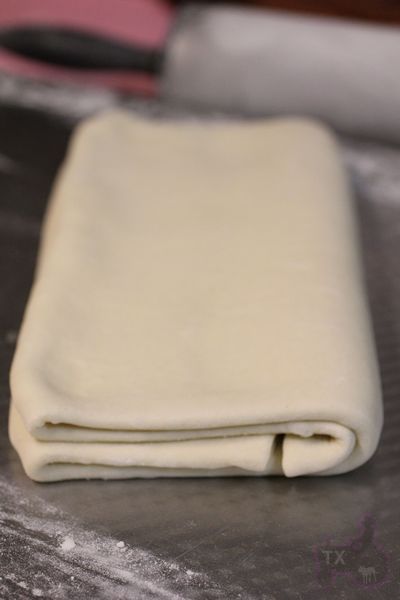

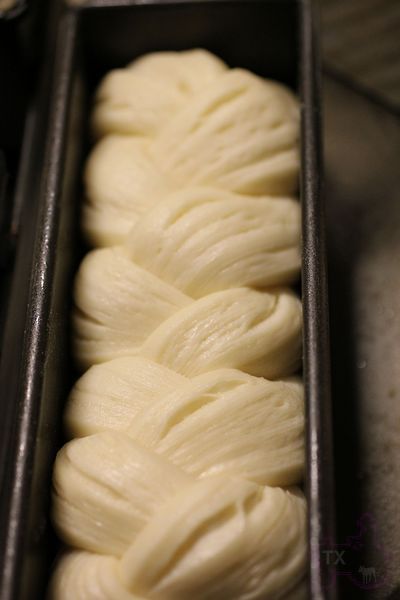
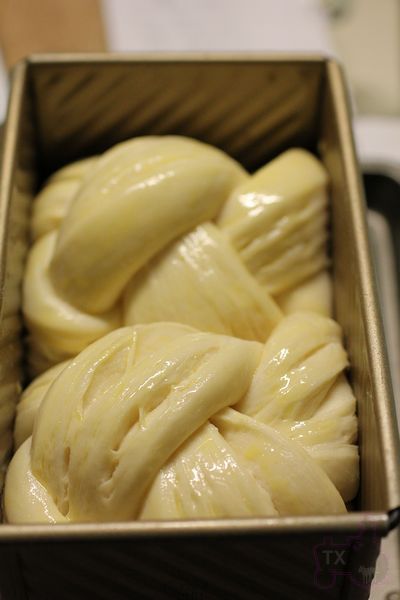
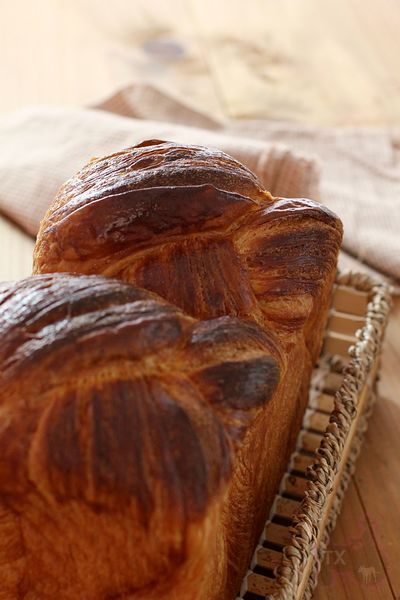


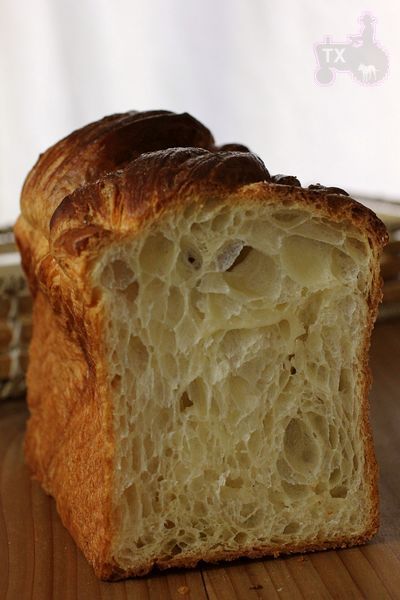




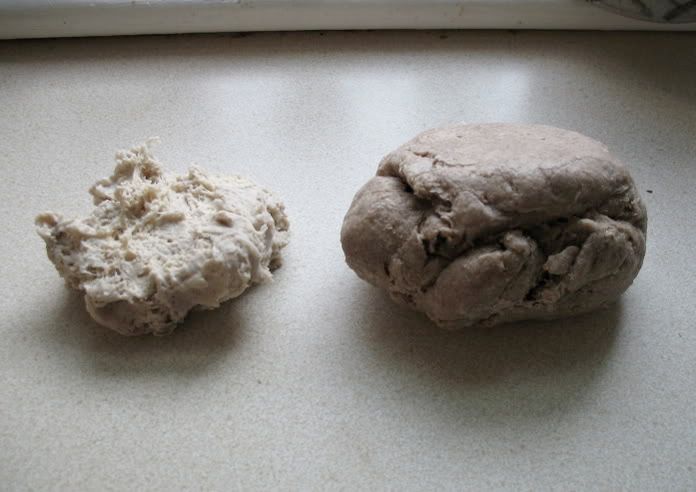 Barney Barm, my white starter is on the left; Arthur the whole wheat starter on the right. The bran and germ in whole wheat absorb a lot of water, so that starter is even stiffer than the white.
Barney Barm, my white starter is on the left; Arthur the whole wheat starter on the right. The bran and germ in whole wheat absorb a lot of water, so that starter is even stiffer than the white.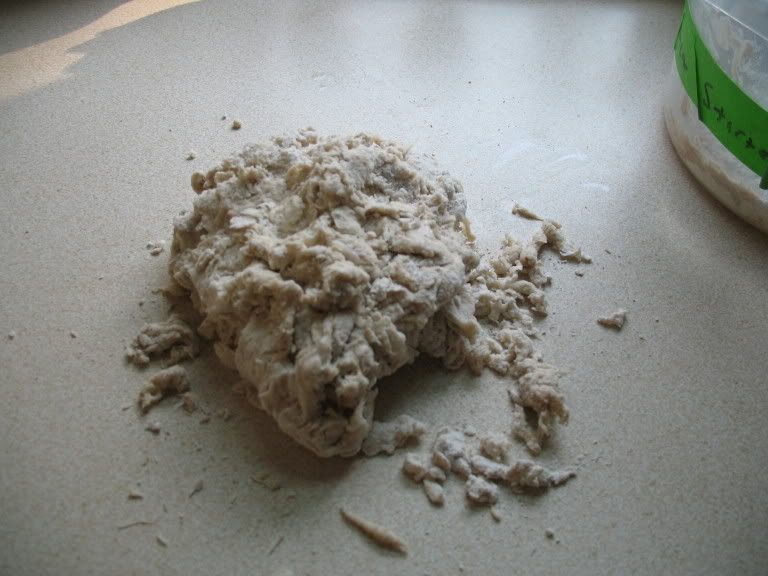 For example, here's my white starter after I've done my best to mix it up in the bucket. Time to knead a bit.
For example, here's my white starter after I've done my best to mix it up in the bucket. Time to knead a bit.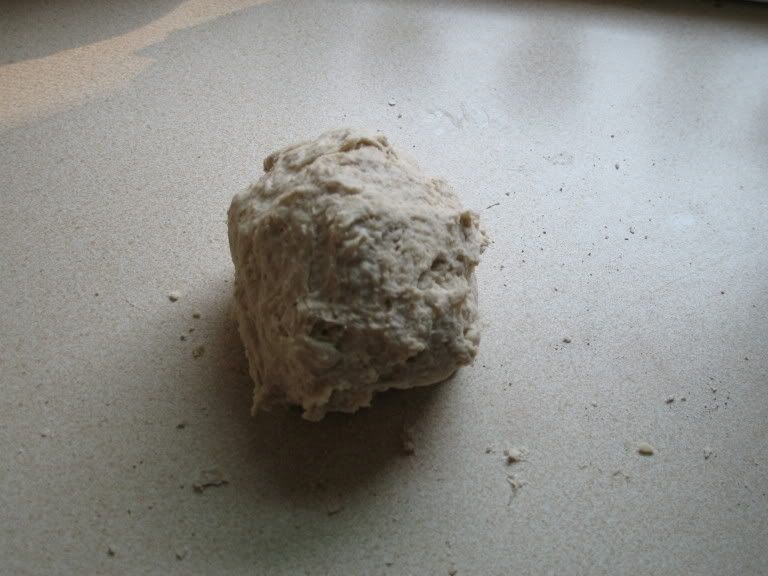 Here's what it looks like after kneading.
Here's what it looks like after kneading.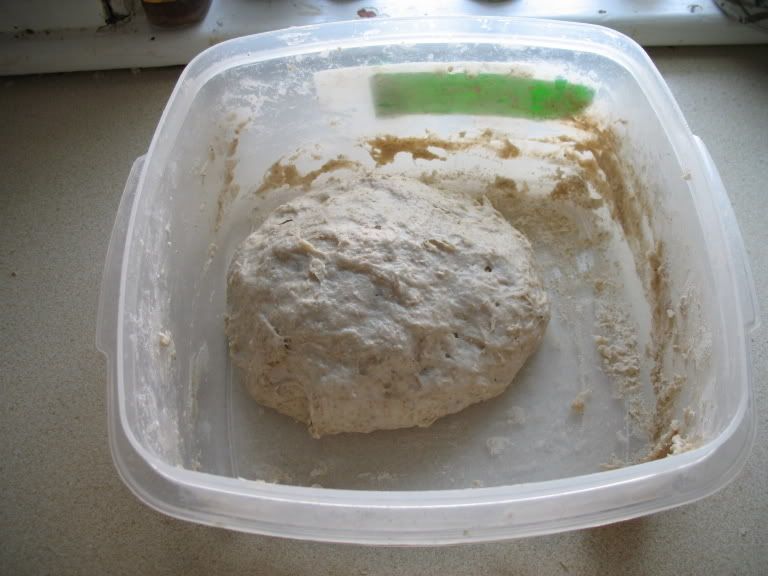 And here's what it looks like 5 hours later once it's ripe.
And here's what it looks like 5 hours later once it's ripe.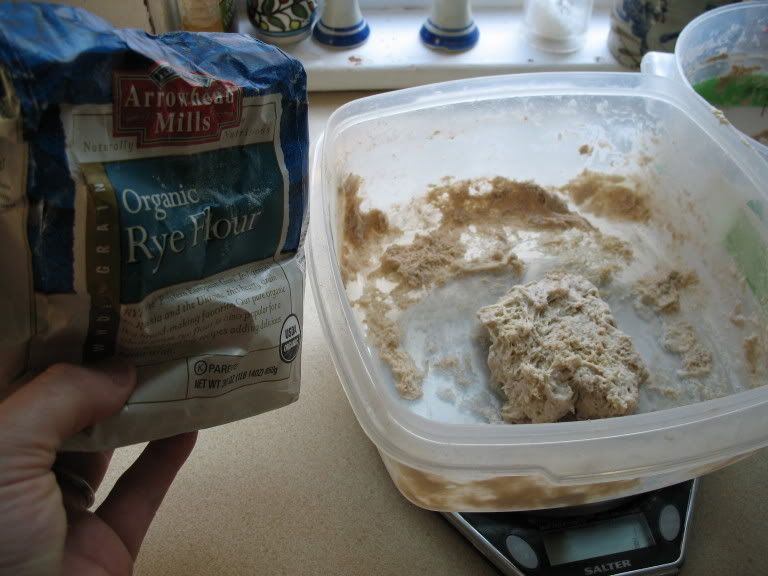
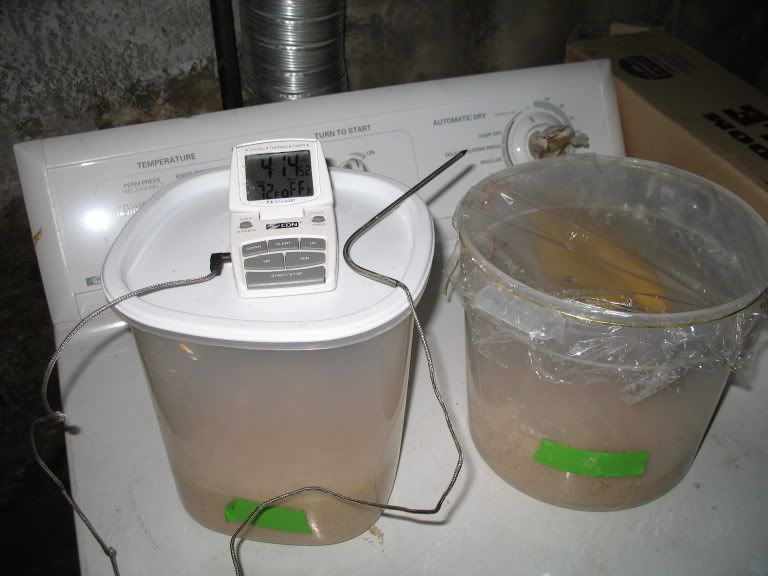
 First, turn the risen dough out on a lightly floured surface (heavily floured if your dough is very wet).
First, turn the risen dough out on a lightly floured surface (heavily floured if your dough is very wet). Stretch it to about twice its length.
Stretch it to about twice its length. Gently degass one-third of the dough, fold it over the middle, and degass the middle section to seal.
Gently degass one-third of the dough, fold it over the middle, and degass the middle section to seal.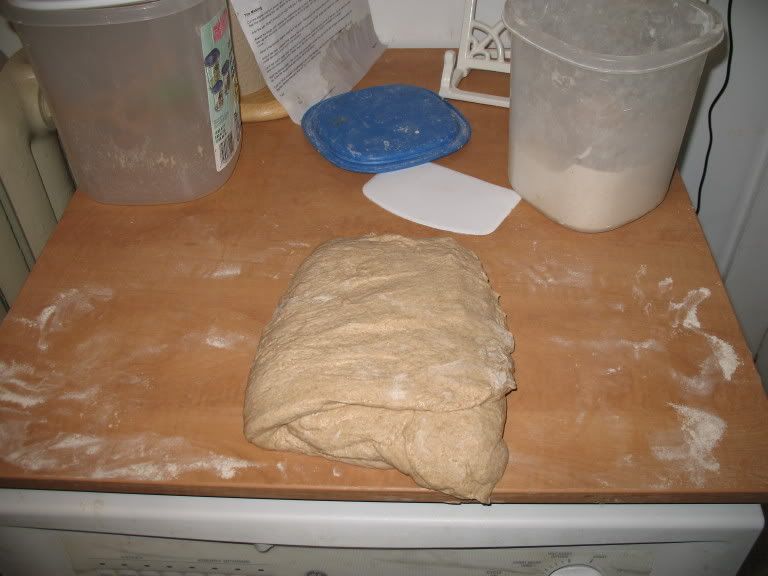 Do the same for the remaining side. Take the folded dough, turn it one-quarter, and fold once more before returning to the bowl or bucket to rise again.
Do the same for the remaining side. Take the folded dough, turn it one-quarter, and fold once more before returning to the bowl or bucket to rise again.